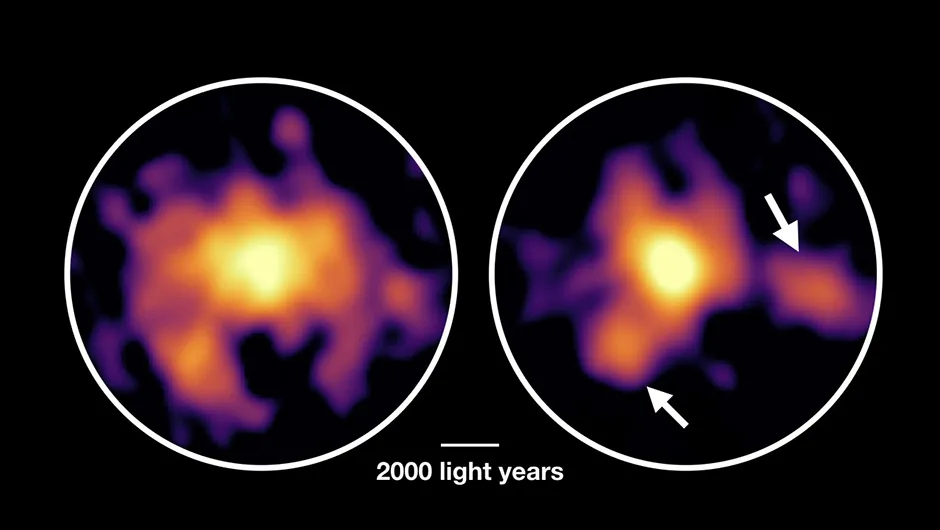Artist’s impression of COSMOS-AzTEC-1, a monster galaxy that is forming stars 1,000 times quicker than our own Galaxy. Image Credit: National Astronomical Observatory of Japan
Astronomers have obtained the most detailed view of a distant ‘starburst’ galaxy ever made.
The galaxy is located 12.4 billion lightyears away, and observations revealed that its molecular clouds are highly unstable.
This instability has produced a galaxy in which stars are forming at a fierce rate, known as a ‘starburst’ or ‘monster’ galaxy.
These monster galaxies are thought to be ancestors of the huge elliptical galaxies found in the Universe today, so understanding more about them can reveal clues as to the formation and evolution of galaxies.
The observations were made by the Atacama Large Millimeter/submillimeter Array in Chile.
Monster or starburst galaxies form stars at a rate 1,000 times higher than our own Galaxy, the Milky Way.
Understanding why they are so active is an important step in learning how galaxies form and how stars are born in the Universe.
The galaxy in this study is known as COSMOS-AzTEC-1 and was found to be rich in the ingredients needed for stars to form.
ALMA observations enabled astronomers to create a map of the distribution and motion of gas in the galaxy; the highest resolution molecular gas map of a distant starburst galaxy ever made.
This map revealed that the clouds of gas in the galaxy are unstable.
Normally, inward gravity and outward pressure are balanced in the galaxy’s clouds, and star formation is self-regulating.
But in the case of COSMOS-AzTEC-1, the pressure is weaker than the gravity and the clouds are therefore unbalanced.

“We found that there are two distinct large clouds several thousand light-years away from the center,” says Ken-ichi Tadaki, a postdoctoral researcher at the Japan Society for the Promotion of Science and the National Astronomical Observatory of Japan, and lead author of the study.
“In most distant starburst galaxies, stars are actively formed in the center. So it is surprising to find off-center clouds.”
As a result, star formation is occurring at a ferocious pace.
The team behind the study calculate that the gas will be used up within 100 million years: ten times faster than in other star-forming galaxies.
Just why this galaxy is so unstable remains to be discovered, but it could be the result of a merger with another galaxy, as such collisions are known to cause bursts of star formation.
“At this moment, we have no evidence of merger in this galaxy.
By observing other similar galaxies with ALMA, we want to unveil the relation between galaxy mergers and monster galaxies,” Tadaki says.
